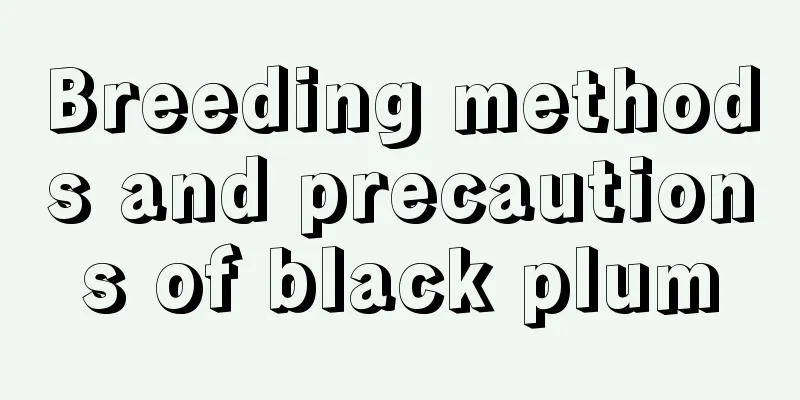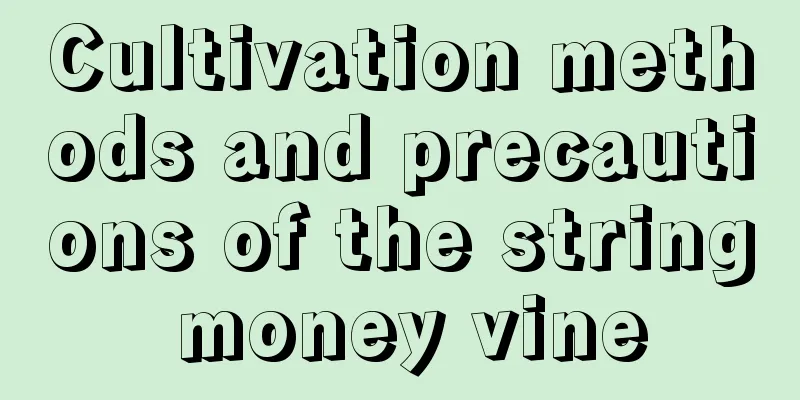Precautions for the Weeping Guanyin potted plant

PrecautionsStemThe stem tissue of the weeping angel is relatively loose. If the water quality is poor, it is easily contaminated, causing root and stem rot. Therefore, keep the water in the bottle clean. At the same time, you should also change the water and culture medium to clean the mucus on the tubers and roots, and cut off the rotten roots. temperatureThe weeping angel is a very common green potted plant at home, but because it is a tropical plant, it generally does not bloom in the north. But if the temperature and other conditions at home are suitable, it will bloom. It can only grow well in an environment no lower than 18℃. If the temperature is lower than 18℃, it will be in a dormant state and stop growing. Pay special attention to indoor ornamental cultivation. soilIt is not very demanding on soil, but grows best in well-drained sandy loam or humus loam containing organic matter. Since the weeping angel prefers warm, humid and semi-shady environment and is not cold-resistant, the soil in the pot must be kept moist during the growing season. But it can also tolerate a bit of drought. WateringIn summer, the flower pots should be placed in a semi-shaded and ventilated place, and water should be sprayed around and on the leaves frequently to increase the air humidity, lower the leaf temperature, and keep the leaves clean. The weeping angel needs more water in summer, but not excessively. It should be watered in appropriate amounts, with water not stagnant in the soil, otherwise the tubers will rot. It should hibernate in winter, water less and stop fertilizing. FertilizationSince the weeping angel grows very fast, it likes fertilizer. Apply nitrogen, phosphorus and potassium compound fertilizer 1-2 times a month (the nitrogen ratio can be slightly higher). If a little ferrous sulfate can be applied, the leaves will be larger and greener. Long-term lack of fertilizer will easily cause the lower end of the weeping angel's stem to be bare, affecting its ornamental value. When the temperature drops and the plant enters a dormant period, you can reduce or stop applying fertilizer. toxicityIf you want to grow a small and exquisite weeping angel indoors, then just wait until its seedlings grow to about one foot and are suitable for home display, then immediately spray the whole plant with 2% paclobutrazol solution. The stems and leaves that grow thereafter will not be more than 40 centimeters high, and the leaves will be thick, with high ornamental value. Spraying the pesticide once every six months or so can have a good effect in controlling height. The juice in the leaves of the weeping angelica can cause itching on the skin after contact with the human body, so be careful when coming into contact with it. |
<<: Is Blue Enchantress a rose?
>>: What are the common species of Crinum?
Recommend
Balcony too crowded? Teach you 4 tricks to double your space instantly and take care of growing flowers and hanging clothes!
Hanging Landscape The balcony, as a space for the...
How to fertilize rosemary
How to fertilize 1. Rosemary is not a fertilizer-...
Cultivation methods and precautions of Katu Red Sword
1. Maintenance methods 1. Soil: Katu Red Sword li...
How many years does wax apple bear fruit?
Wax apple planting results after several years Wa...
How to prune ivy
How to prune ivy Ivy branches can be pruned in sp...
Which month is the best to dig Pueraria root?
Pueraria root has always been known as "litt...
How to prune a small banyan tree
When to prune the banyan tree Small banyan trees ...
How to divide the money tree
Money tree division time Money tree is a perennia...
What is bitter vegetable?
What is bitter vegetable? Dandelion is the young ...
Ginseng planting technology and cultivation management How to plant ginseng seeds and when to plant them
Ginseng is also known as yellow ginseng, goblin, ...
Can trumpet creeper be planted in a pot?
Can trumpet creeper be planted in flower pots? Tr...
Agarwood's growing environment and local conditions
Agarwood growth environment and conditions Agarwo...
What fertilizer is best for osmanthus trees?
The osmanthus tree is loved by people for its fra...
Pests of Dichondra chinensis and their control
Horseshoe beetle encounters scarab beetles and mo...
Daniel's breeding methods and precautions
1. Maintenance methods 1. Potting soil: Daniel li...









